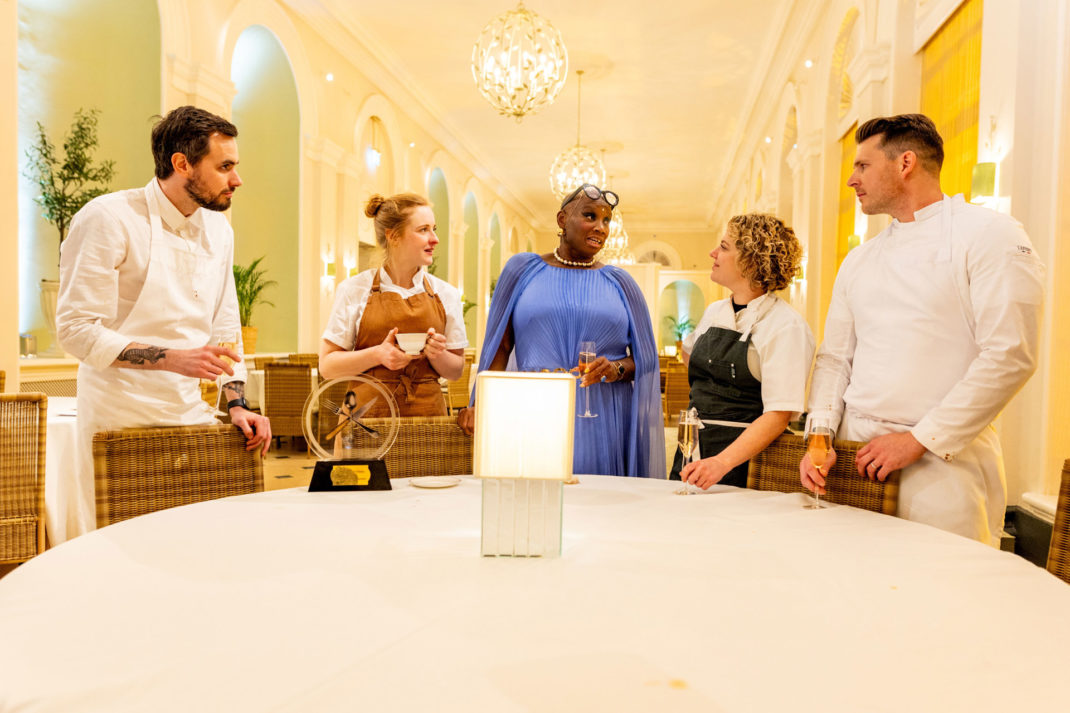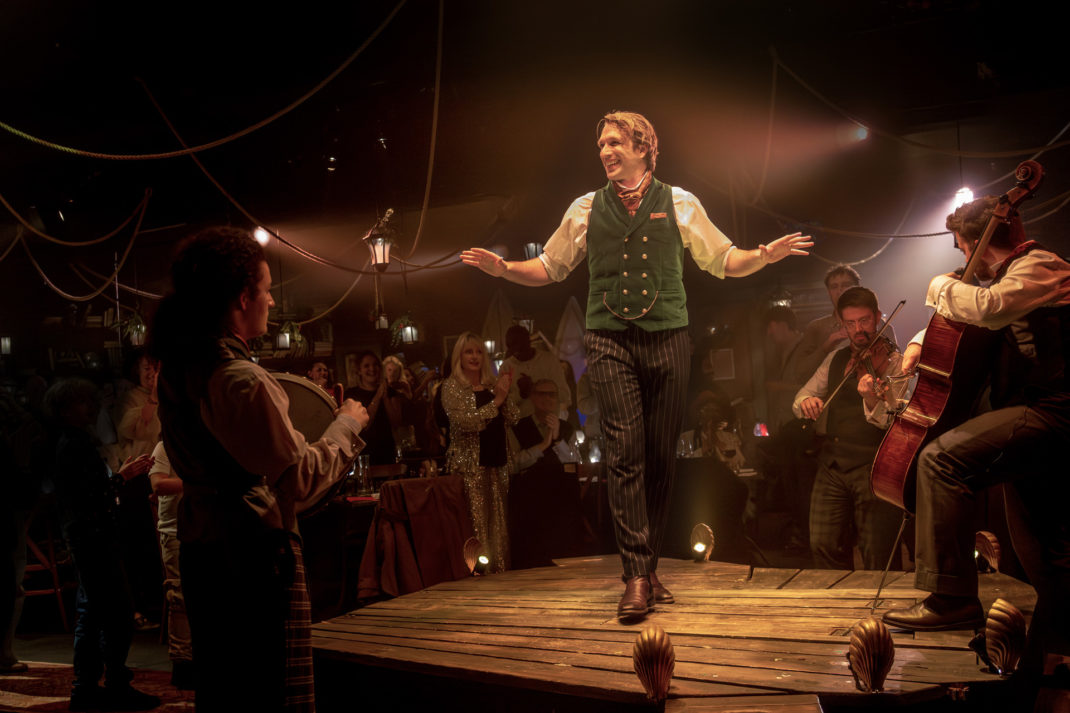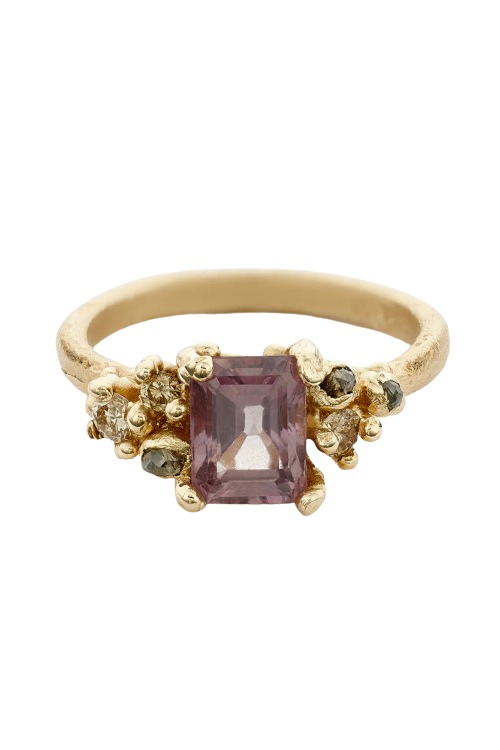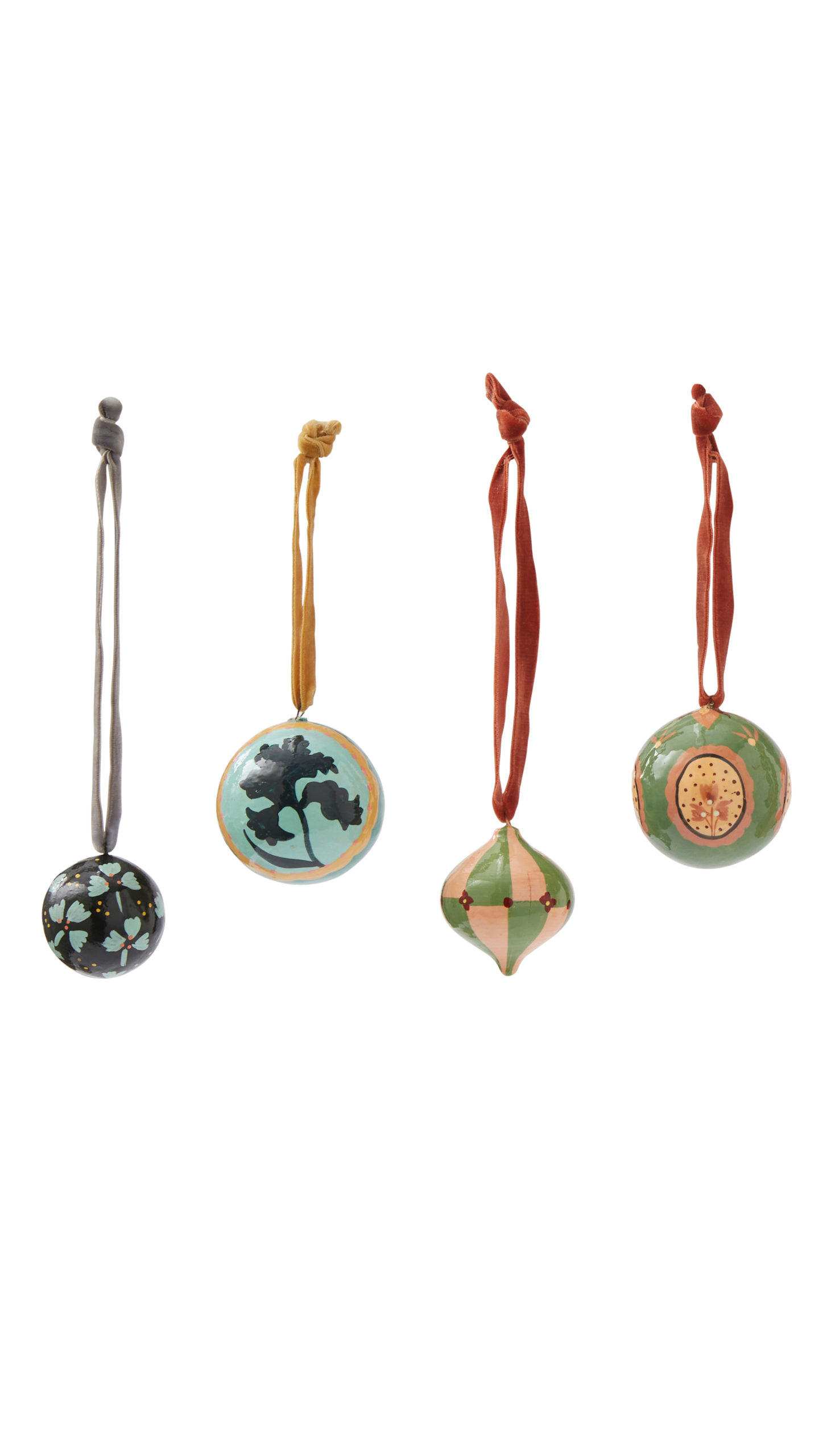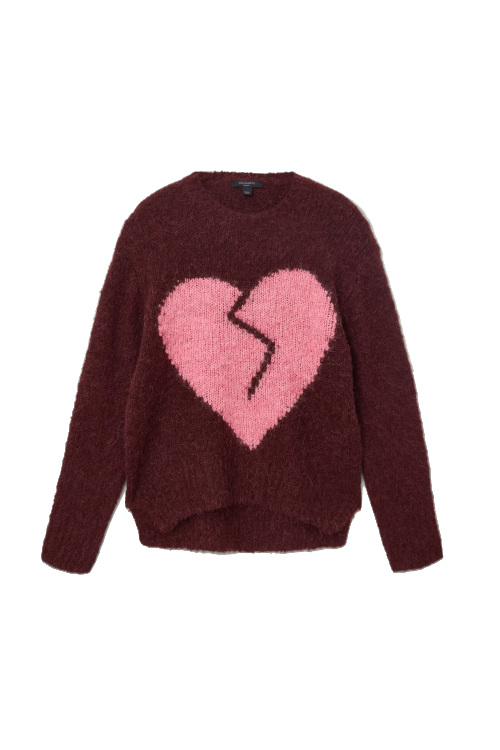Why Do We Celebrate Valentine’s Day?
By
10 months ago
Who even is Valentine, anyway?

Valentine’s Day is one of the world’s most commercialised religious holidays – second only perhaps to Christmas. Originally commemorated as a Christian feast day honouring a martyr named Valentine, it goes without saying that this annual celebration of love has evolved over the centuries. But why? As the special day approaches, here we delve into the truth about Valentine’s Day, and explore the gory history behind the romance.
The Truth About Valentine’s Day
What Is The Real Story Behind Valentine’s Day?
Valentine’s Day derives from a combination of ancient Christian and Roman traditions, though there are two main theories that underpin it. The first theory is that Roman emperor Claudius II murdered two men named Valentine on 14 February in separate years in the third century CE. (Note: Valentine was a popular name in late antiquity, meaning worthy, strong and powerful.) Considering them martyrs, it is thought the Catholic church created ‘St Valentine’s Day’ to honour the men. Better still, it is thought that one of the two killed Valentines was Saint Valentine of Terni, a clergyman who is rumoured to have secretly performed weddings for Roman troops against the wishes of the emperor, marking him as a supporter of love.
The second theory is related to the first: it alleges that Saint Valentine of Terni was persecuted for performing weddings for Roman troops and, while he was imprisoned awaiting death, he wrote a letter to a young girl he had fallen in love with (his jailer’s daughter, no less), signing it ‘from your Valentine’. He was killed and his body buried on 14 February 270 CE, leading to the annual observed Feast of Saint Valentine. Some people believe this is where the popular anonymous Valentine’s Day card sign off, ‘your Valentine’, came from, as well as the question, ‘Will you be my Valentine?’.
So, are either of these theories true? There’s no way of knowing. Saint Valentine of Terni was indeed a real person, and the Feast of Saint Valentine has been celebrated since at least the eight century. That said, according to Brittanica, though the Roman Catholic Church recognises St. Valentine as a saint of the church, ‘he was removed from the General Roman Calendar in 1969 because of the lack of reliable information about him’.
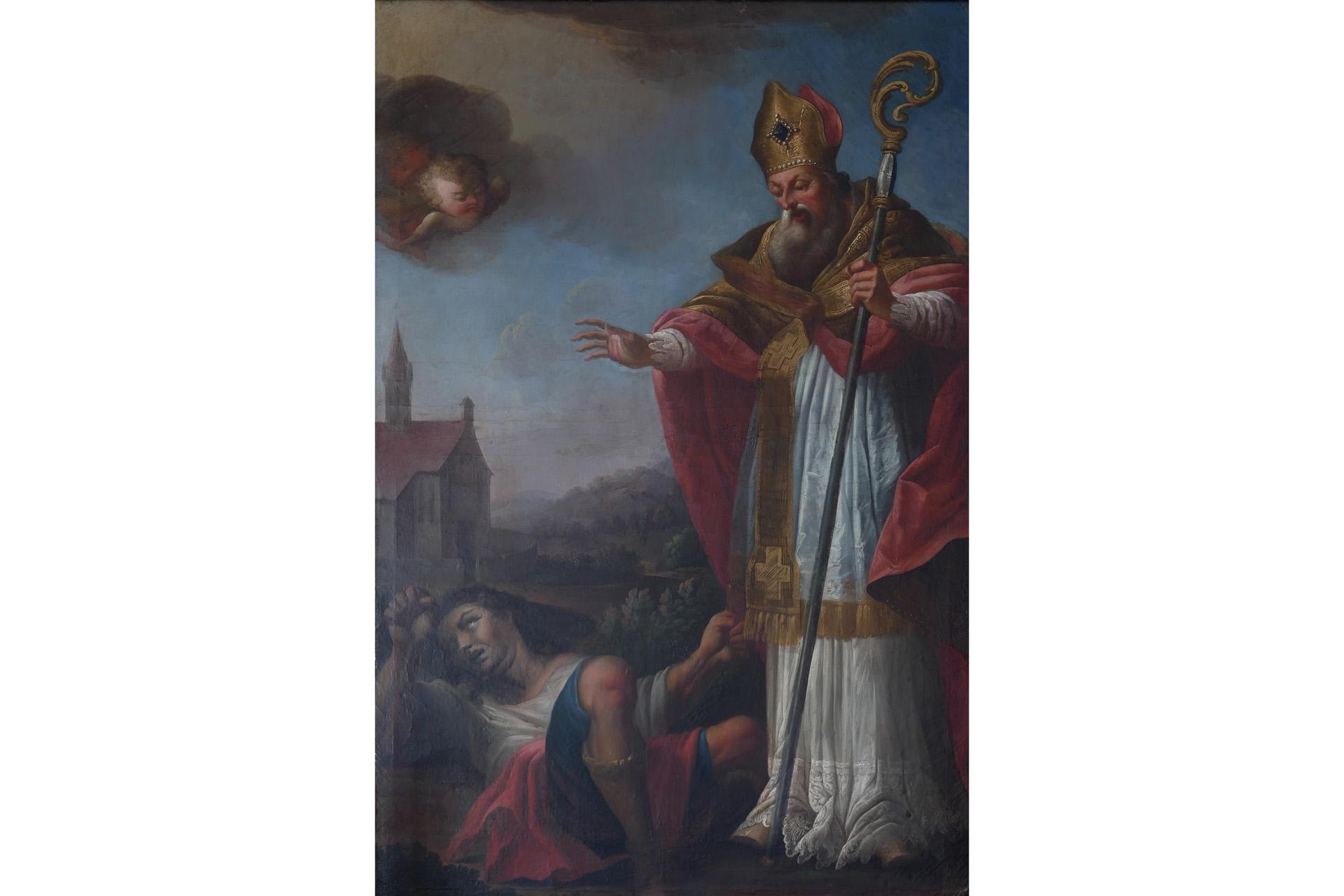
Saint Valentine © Ralph Hammann – Wikimedia Commons, Public domain, via Wikimedia Commons
Is Valentine The Saint Of Love?
According to Brittanica, Valentine is the patron saint of lovers, epileptics and beekeepers.
When Did Valentine’s Day Start Being About Love?
While the story behind Saint Valentine of Terni has undertones of love, it was celebrated as a Christian feast day honouring Valentine as a martyr, entirely separate from love, for most of history. The first recorded association between Valentine’s Day and romantic love is thought to be Geoffrey Chaucer’s poem, ‘The Parliament of Fowls’, which was penned in the late 14th century.
Alternatively, if we take the above theories as folktales rather than fact, we can find the roots of Valentine’s Day in the ancient Roman pagan festival of Lupercalia (meaning ‘purifications’ or ‘purgings’), a fertility rite that took place every year from 13–15 February.
Who Is Cupid?
OK, we’ve narrowed down who Valentine is – but who is Cupid? The rosy cheeked cherub on your V-day card often comes with a bow, shooting arrows through the heart of lovers. The figure can be traced back to ancient times (around 700 BCE), and the Greek god of love, Eros. Eros was originally a handsome god imbued with the power to make people fall in love. But, as time went on, Eros evolved into a shorter, cuter little boy named Cupid – and this was his firmed-up identity by the 4th century BCE. By the 1800s, Cupid’s match-making powers had been absorbed into depictions of Valentine’s Day.
When Did Valentine’s Day Become Popular?
The practice of giving gifts and writing cards and love letters on Valentine’s Day can be traced back to the 1600s. The same is true of flowers: red roses represent love in the language of flowers, so naturally became a popular choice. The oldest recorded Valentine letter, however, is a poem written by a medieval French duke called Charles to his wife in 1415. While imprisoned at the Tower of London aged 21, Charles wrote, ‘I am already sick of love, My very gentle Valentine’.
It is thought Valentine’s Day really became popular in the mid-1800s with the introduction of the penny post, making card-sending more affordable. Across the Atlantic, Esther A. Howland is credited with commercialising V-day cards, mass-producing elaborate, crafty cards adorned with lace and ribbon in the 1840s, while Hallmark Cards produced its first Valentine card in 1913. In terms of gifts, we have none other than Richard Cadbury, son of Cadbury founder John Cadbury, to thank for our heart-shaped boxes of chocolate, which he invented in 1861.
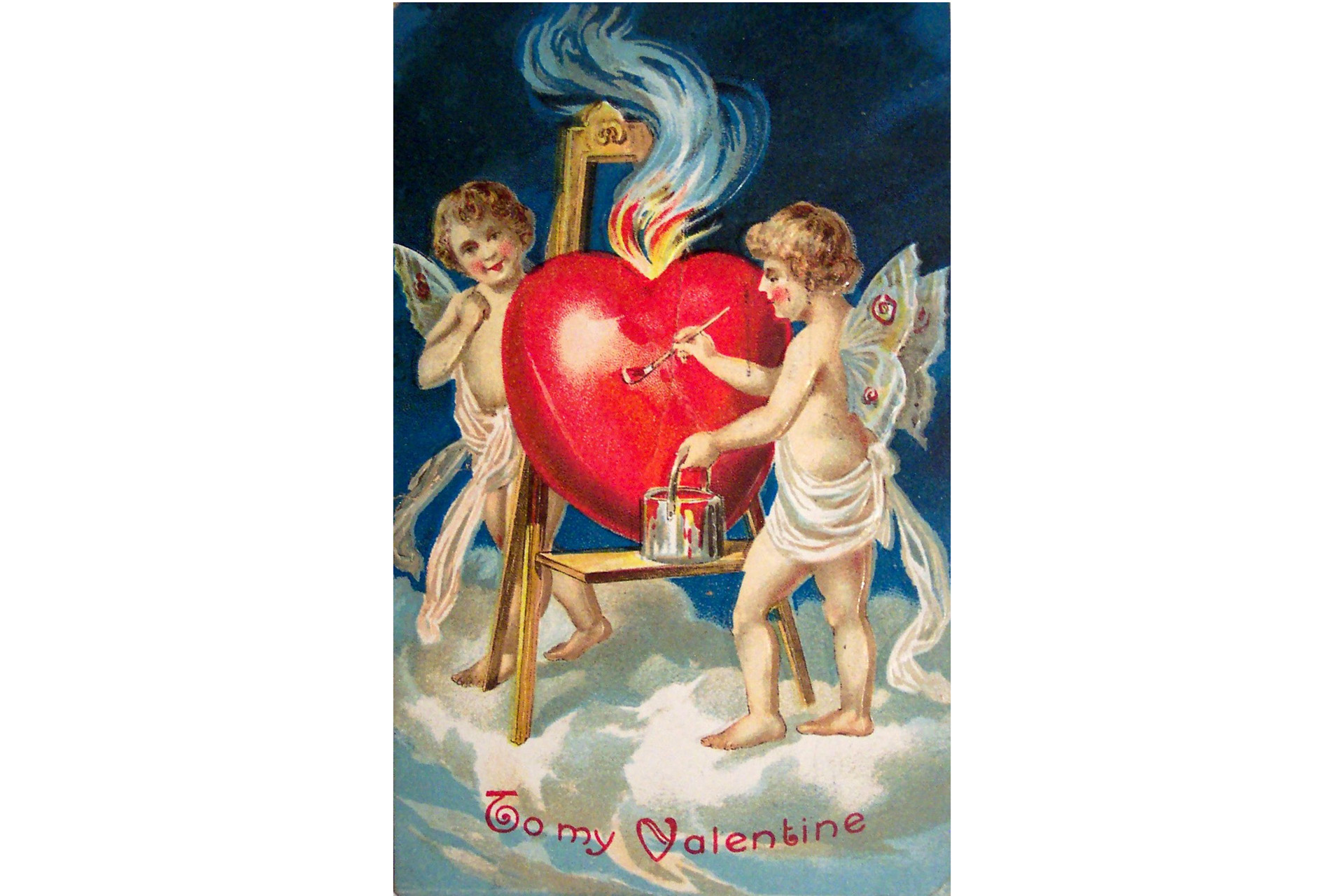
A Valentine’s card, c. 1909 © Wikimedia Commons
Valentine’s Day Gifts
Traditional Valentine gifts include rings, brooches, girdles, gloves, gauntlets, handkerchiefs, combs, mirrors, purses and boxes – all intimate trinkets, and small tokens of love. If you’re looking for the perfect gift for your special someone in 2024, check out our dedicated gift guide here.
Why Do We Celebrate Valentine’s Day?
While it began as a feast day, Valentine’s Day has been celebrated more recently to playfully show affection to the people we love. Sending Valentine’s Day cards can begin at a young age – especially in the UK and the US – with many children sending cards to their peers at school, or parents writing Valentine’s Day cards to their children (according to a national poll by card shop Clintons, one in 20 UK parents do this).
Today, some people associate Valentine’s Day with large gestures, whether that’s spending exuberant amounts of money on gifts or experiences, or declaring your love with a marriage proposal. In 2023, Americans spent nearly $26 billion on Valentine gifts, while many people got engaged (not as many as Christmas, alas).
Valentine’s Day Traditions
While modern Valentine’s Day traditions can be gimmicky – think soppy cards, stuffed animals clutching hearts, heart-shaped chocolate lollipops and red roses all around – there are a number of more heartwarming traditions associated with 14 February.
Jack Valentine
In Norfolk, a character called Jack Valentine traditionally knocks on the back door of houses, leaving sweets and gifts for children. Spring’s Santa, if you will.
Puzzle Purse
Is a card just too simple for you? Puzzle fanatic Victorians instead created puzzle purses, a series of interconnected love letters that could be read separately, but also opened out to create a beautiful design and message. Learn how to make one here.
Health
In Slovenia, St Valentine – aka Zdravko, meaning ‘healthy’ – is a saint of spring and good health, and a patron of beekeepers and pilgrims. As an old proverb says, ‘Saint Valentine brings the keys of roots.’ In practice, Valentine’s Day is celebrated as the day when farm and vineyard work begins – the opposite of a Harvest Festival.
Divination
Before witches were decidedly bad, women in the middle ages conducted all sorts of spooky experiments on Valentine’s Day in order to discover the identity of their future lover. Examples include pinning sage leaves to your pillow or sleeping with a slice of wedding cake beneath your pillow – both of which were supposed to give you prophetic visions. Meanwhile, some girls spent 14 February putting love letters in a bowl of water, chanting and hoping the letters of a name would float to the top. Elsewhere, for reasons we can’t quite understand, a popular way young women attempted to discover their lover was by visiting the local churchyard at midnight on 13 February and interpreting the ‘omens’ that happened while there…
White Day
In Japan, 14 February is reserved for women to give cards and sweets to the object of their affection. Exactly one month later on 14 March, men are invited to repay the favour on a day called ‘White Day’.
Vinegar Valentine
Being pursued by someone you’re just not interested in? Time to write a Vinegar Valentine: an anti-Valentine used to inform people their pursuit of you is in vain. According to Slate, half of all Valentine card sales in the 1800s were for these sour rejections.
Letters To Juliet
Did you watch the 2010 film starring Amanda Seyfried, Letters to Juliet? It was inspired by the Valentine’s Day tradition that sees thousands of people send letters to Verona, Italy addressed to Juliet Capulet, the protagonist of William Shakespeare’s famed play, Romeo and Juliet. Though Juliet is fictional (and, if not, very much dead), these letters are not sent into the ether: a team of volunteers known as ‘Juliet’s secretaries’ read through each letter – many of which are extremely heartfelt – and pen a response. They then choose a winner of the ‘Cara Giulietta’ prize (‘Dear Juliet’ in English); the winner is invited to Juliet’s home in Verona to attend a special ceremony.
Mass Weddings
In the Philippines, some local governments organise mass weddings on or around 14 February to help couples who can’t afford their own weddings, making it the most common wedding anniversary in the country. In 2010, a whopping 1,500 couples wed at a mass ceremony in a Manila suburb, while people continued to turn out 10 years later in 2021, despite the pandemic, to say ‘I do’.
Friendship
In many Latin American countries, 14 February is known as día del amor y la amistad (‘day of love and friendship’). While romantic couples often exchange flowers and chocolate, the focus is on showing gratitude to friends.
Galentine’s Day
In recent years, an anti-Valentine’s celebration has increased in popularity, rejecting the traditional, gimmicky love associated with 14 February: Galentine’s Day. Celebrating friendship between women, or just celebrating being content alone, it typically takes place on 13 February, but it isn’t rare for Galentine’s celebrations to take place on any day in February.
When Is Valentine’s Day?
Valentine’s Day is celebrated annually on 14 February.





